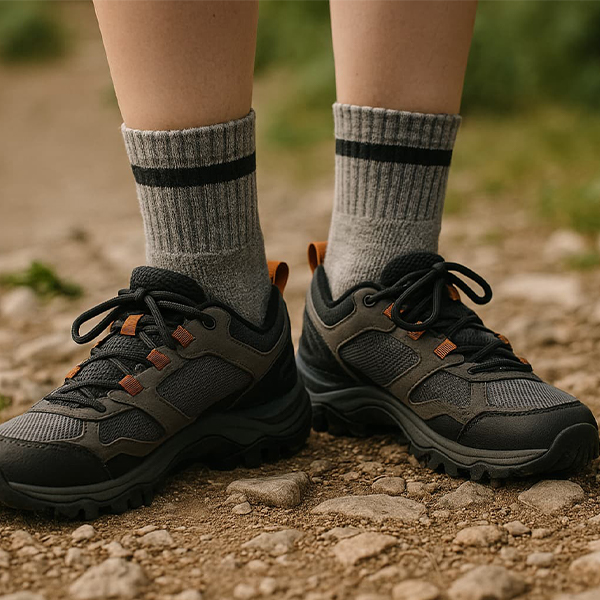Let’s be honest—how often do you look at your socks and wonder, “Is this really 100% cotton?” You see labels, you hear claims, and sometimes you just assume they’re telling the truth. But what if I told you there’s an easy way to find out for yourself—using fire?
Sounds dramatic? Maybe. But trust me, it’s one of the coolest (and oddly satisfying) ways to figure it out. Before we dive into the fire part (literally), let’s talk about why sock material matters so much.
Comfort Starts with Cotton—or Does It?
When it comes to socks, cotton has a bit of a golden halo around it. People love it for good reason—it’s soft, breathable, and doesn’t trap moisture like synthetic stuff. A good pair of pure cotton socks can feel like a hug for your feet. But here’s the twist: many socks that say “cotton” are actually blends—like 70% cotton, 30% polyester. And guess what? That 30% can totally change how they feel and perform.
Synthetic blends (like polyester or nylon) make socks more elastic and durable—but sometimes less comfy. They can also trap heat and sweat, which is a nightmare if your feet are already prone to odor.
That’s why more people are turning to trustworthy socks manufacturers to get the real deal. And if you’re looking for reliable quality, checking out a China socks maker like SocksForUs is a smart move.
The Burn Test: Not Just for Fun Pyros
Okay, so let’s get to the fun part. Ever heard of the “burn test”? It’s an old-school trick used by fabric geeks to identify materials. Here’s how it works: you burn a small piece of the sock and observe how it reacts.
Pure Cotton: Burns like paper, steady flame, smells like burning paper or leaves, and leaves soft gray ash.
Polyester/Nylon: Melts first, then burns, smells like plastic, and leaves a hard black bead.
Blends: A mix of both—some ash, some melted residue.
Easy, right? But wait—before you start torching your sock drawer, safety first: use a well-ventilated area, tweezers, and a fire-safe dish. Don’t burn the whole sock (unless it has a hole already ).
This quick test is honestly kind of empowering. You suddenly feel like a textile detective, busting sock scams one fiber at a time.
Picking the Right Sock Starts with Asking the Right Questions
Now that you know not all socks are what they claim to be, it’s time to shop smarter. First, check labels, but don’t stop there. Look up the brand. Ask questions. And when in doubt—go straight to the source. Work with a dedicated socks manufacturer or a China socks factory that openly shares their materials and process. That transparency speaks volumes.
And yes, customization is also key. Want specific thickness? Different textures for summer or winter? A reliable socks maker can get it done exactly the way you want.
You don’t have to settle for itchy blends or sweaty toes anymore. Take control of what you wear from the ground up.
Final Thoughts: Truth, Fire, and Comfy Feet
Sometimes, the truth does come out in flames. And when it comes to socks, this little test can save you a lot of discomfort—and money.
So next time you buy a pair of socks and wonder, “Is this really cotton?”—you know what to do. Or better yet, skip the guessing and go with a manufacturer who already has your comfort (and toes) covered. Like the folks at SocksForUs—where transparency meets toasty toes.
Because when your feet are happy, the rest just follows.

.jpg)


